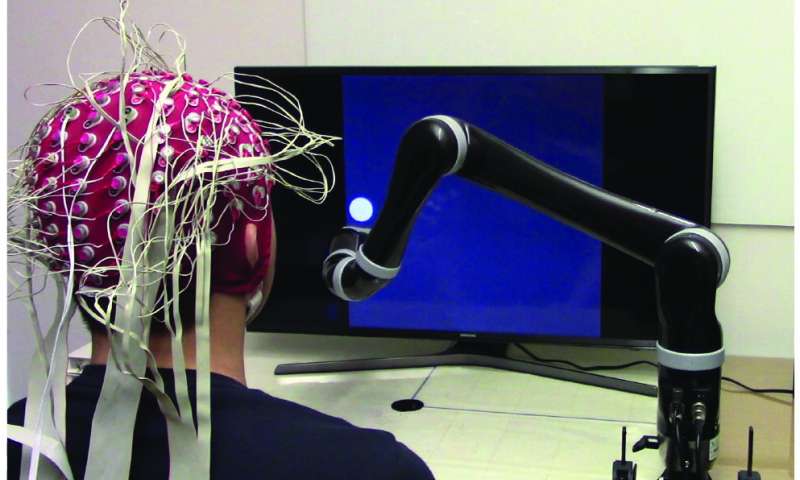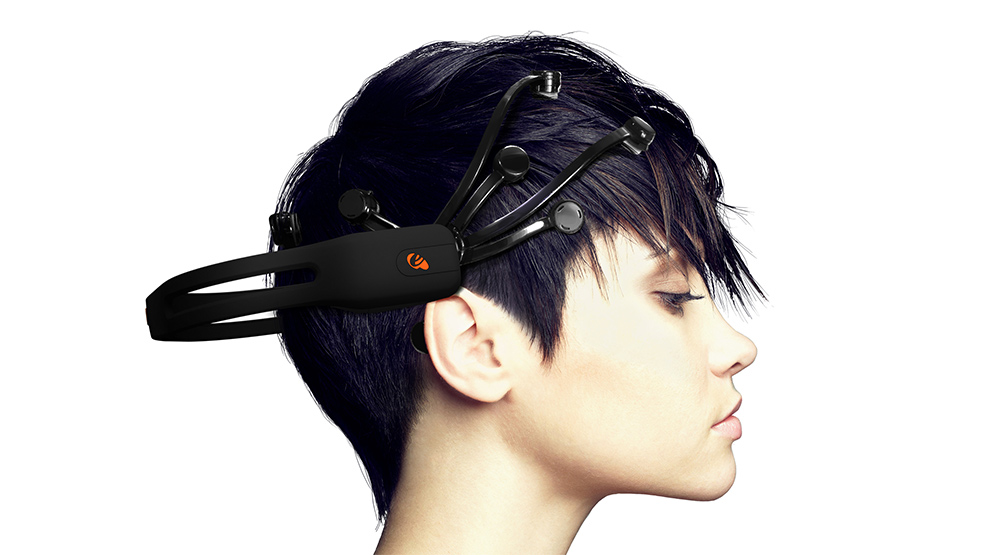
5th July 2019 Breakthrough achieved with non-invasive brain-computer interface Researchers at Carnegie Mellon University, Pennsylvania, have demonstrated the first non-invasive, mind-controlled robotic arm with smooth and continuous control.
Researchers from Carnegie Mellon University, in collaboration with the University of Minnesota, have made a breakthrough in the field of non-invasive robotic device control. Using a non-invasive brain-computer interface (BCI), they developed the first-ever successful mind-controlled robotic arm exhibiting the ability to continuously track and follow a computer cursor. Being able to control robotic devices non-invasively – using only thoughts, without the need for brain implants – will have broad applications, in particular benefiting the lives of paralysed patients and those with movement disorders. BCIs have been shown to achieve good performance for controlling robotic devices using the signals from brain implants. When robotic devices are controlled with high precision, they can be used to complete a variety of daily tasks. Until now, however, BCIs successful in controlling robotic arms have used invasive brain implants requiring a substantial amount of medical and surgical expertise to correctly install and operate – not to mention cost and potential risks to subjects. Consequently, their use has been limited to just a few clinical cases. A grand challenge in this field of research is to develop less invasive or even totally non-invasive technology that would allow paralysed patients to control their environment or robotic limbs using only their own thoughts. Such non-invasive BCIs, if successful, would benefit millions of patients and could even potentially be used in applications for the general population.
However, BCIs that use non-invasive external sensing, rather than brain implants, receive "dirtier" signals – meaning lower resolution and less precise control. Despite this, researchers have forged ahead, their eye on the prize of a less- or non-invasive technology that could help patients everywhere on a daily basis. Professor Bin He, Department Head of Biomedical Engineering at Carnegie, is achieving that goal, one key discovery at a time. "There have been major advances in mind-controlled robotic devices using brain implants," says He. "But non-invasive is the ultimate goal. Advances in neural decoding and the practical utility of non-invasive robotic arm control will have major implications on the eventual development of non-invasive neurorobotics." Using novel sensing and machine learning techniques, He and his lab were able to access signals deep within the brain, achieving a higher resolution and overcoming the noisy EEG signals. Their method can significantly improve neural decoding and facilitate real-time device control. In tests, human subjects were shown using a robotic arm to follow a cursor on a computer screen in a smooth and continuous path, for the first time ever. Previously, robotic arms controlled non-invasively had followed a moving cursor in jerky, discrete motions – as though the arm was trying to "catch up" to the brain's commands.
In a paper, published in Science Robotics, the team presents a new framework that improves upon the "brain" and "computer" components of BCI by increasing user engagement and training, as well as spatial resolution of non-invasive neural data through EEG source imaging. The team show how their unique approach not only enhanced BCI learning by nearly 60% for traditional centre-out tasks, but also improved continuous tracking of a computer cursor by over 500%. The technology also has applications that could help a variety of people, by offering safe, non-invasive "mind control" of devices that can allow people to interact with and control their environments. The technology has, to date, been tested in 68 able-bodied human subjects (up to 10 sessions for each person), including virtual device control and controlling of a robotic arm for continuous pursuit. The technology is directly applicable to patients, and the team plans to conduct clinical trials in the near future. "Despite technical challenges using non-invasive signals, we are fully committed to bringing this safe and economic technology to people who can benefit from it," says He. "This work represents an important step in non-invasive brain-computer interfaces – a technology which someday may become a pervasive assistive technology aiding everyone, like smartphones."
Credit: Emotiv Systems
Comments »
If you enjoyed this article, please consider sharing it:
|









